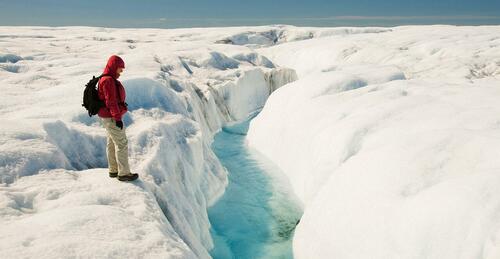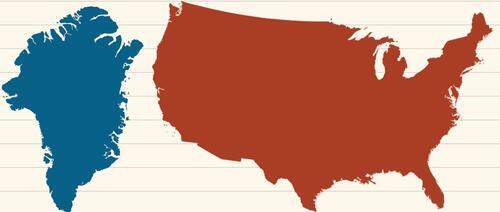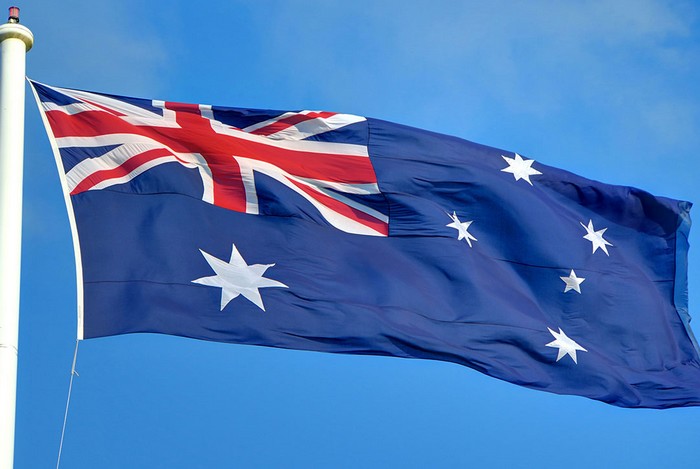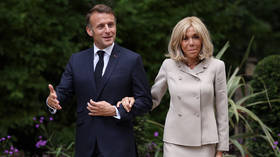
US Intel Agencies Ordered To Target Greenland As Takeover Plotting Intensifies
In the latest indicator of President Trump’s determination to close America’s biggest-ever land acquisition by whatever means necessary, US intelligence agencies have been directed to step up their efforts to gather information about Greenland, Denmark and their internal political dynamics, according to two people „familiar with the effort” who leaked the news to The Wall Street Journal.
Director of National Intelligence Tulsi Gabbard lashed out at the leaks: “The Wall Street Journal should be ashamed of aiding deep state actors who seek to undermine the President by politicizing and leaking classified information. They are breaking the law and undermining our nation’s security and democracy.” Opting against similar fire-breathing, National Security Council spokesman James Hewitt was restrained: “The president has been very clear that the U.S. is concerned about the security of Greenland and the Arctic,” he told the Journal.
 80% of Greenland is covered by a vast ice sheet up to 2 miles thick — with many mineral treasures beneath (via CarbonBrief)
80% of Greenland is covered by a vast ice sheet up to 2 miles thick — with many mineral treasures beneath (via CarbonBrief)According to the Journal’s sources, the directive came last week by way of a „collection emphasis message,” sent by several senior intelligence officials to subordinate agency leaders. As its name implies, this type of message shapes the priorities with which assets are assigned to various intelligence missions. The agencies are now tasked with:
- Gathering information about Greenland’s independence movement
- Assessing Greenlanders’ sentiments about US extraction of its wealth of resources
- Identifying backers of a US takeover of the island — in both Greenland and Denmark
It’s not clear which of the intel community’s many tools — which include spy satellites, drones, communications surveillance and covert operatives — will be used to harvest information about political movements and individuals in Greenland and Denmark.
American spies in Greenland. pic.twitter.com/sQqnSXcbbC
— Hoodlum (@NotHoodlum) May 7, 2025
Attempting to cast the directive as unusual, a former intelligence official told the Journal that “intelligence collection resources are inherently limited” and are typically directed against „perceived threats, not allied countries.” However true that is, Trump’s rhetoric about his desire for Greenland has certainly broken the mold. Most recently, in his weekend interview with NBC’s Kristen Welker, Trump wouldn’t eliminate the possibility of an American military conquest of the territory:
“I don’t rule it out. I don’t say I’m going to do it, but I don’t rule out anything. No, not there. We need Greenland very badly. Greenland is a very small amount of people, which we’ll take care of, and we’ll cherish them, and all of that. But we need that for international security.”
The island holds an enormous wealth of natural resources, most notably one of the largest rare earth deposits outside of China. It also sits alongside emerging shipping lanes, and established transatlantic air and sea routes. Greenland is already home to the US military’s northernmost air base: Pituffik Air Base. Situated 750 miles above the Arctic Circle, the base has ballistic missile early-warning assets, and is also used by Space Command and the North American Aerospace Defense Command.

In March, Vice President JD Vance and then-national security advisor Mike Waltz visited the US base. Danish Prime Minister Mette Frederiksen objected, saying it put “completely unacceptable pressure on Greenland, Greenlandic politicians and the Greenlandic population.” Speaking at the base, Vance issued his own strong statement:
„Our message to Denmark is very simple: You have not done a good job by the people of Greenland…Denmark has not kept pace and devoted the resources necessary to keep this base, to keep our troops, and in my view, to keep the people of Greenland safe from a lot of very aggressive incursions from Russia, from China, and other nations.”
If Trump pulls it off, it would surpass the Louisiana Purchase as the largest-ever expansion of American territory. A largely self-governing part of the Kingdom of Denmark, Greenland is truly massive. At 836,000 square miles, it’s triple the size of Texas. Its population is extreme in another way — at just 56,000, it’s roughly equal to that of Carson City, Nevada, and a little over a quarter of the population of Worcester, Mass. Eighty percent of Greenland is covered by an ice sheet that’s up to two miles thick — which makes extraction of the rare earth and other subterranean wealth a technically challenging proposition.
Tyler Durden
Wed, 05/07/2025 – 09:45


















